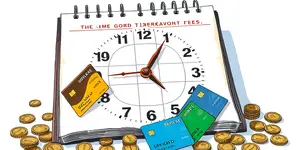
Traveling internationally can come with hidden costs, especially when it comes to handling money abroad. Between poor exchange rates, foreign transaction fees, ATM surcharges, and dynamic currency conversion traps, travelers often lose significant sums. Fortunately, specialist travel cards offer solutions to greatly reduce these expenses. In this article, we explore the various types of travel cards, how they deliver real savings, potential pitfalls, and our top recommendations for 2025. By the end, you’ll be equipped to choose and manage the best cards for your next adventure.
Understanding the main categories of travel cards is the first step toward no foreign transaction fees and smoother spending overseas. Broadly, there are three types: prepaid travel cards, travel credit cards, and debit cards optimized for international use.
Prepaid Travel Cards let you load funds in advance, often supporting multiple currencies. By locking rates when you top up, you guard against volatile currency movements. Prepaid cards also offer enhanced security: you carry no large sums of cash, and if the card is lost or stolen, only the loaded amount is at risk.
Travel Credit Cards remove the typical 2–3% foreign transaction fee charged by standard cards and often provide built-in travel insurance, purchase protection, and rewards such as points, cashback, or airline miles. These cards also benefit from Section 75 protection in the UK and robust fraud safeguards in the US.
Debit Cards for International Use are offered by both traditional and digital banks. Top options waive or reduce FX fees and give you access to real-time mid-market exchange rates. They may link to multi-currency accounts, making it easy to hold and spend local currencies without repeated conversions.
Travel cards provide real value through multiple channels. They eliminate hidden fees, deliver better exchange rates, and offer valuable perks that go beyond simple spending. Key savings mechanisms include:
Many travel credit cards also include cashback on overseas spending, generous sign-up bonuses, and credits for TSA PreCheck or Global Entry applications. Meanwhile, digital debit cards often feature instant spending alerts, budgeting tools, and easy mobile freezing and unfreezing to safeguard funds.
While travel cards can slash costs, travelers should remain vigilant about less obvious charges. Even the most traveler-friendly cards impose limits and fees beyond advertised thresholds.
Additionally, always decline dynamic currency conversion at shops and ATMs. Paying in your home currency may seem convenient but typically results in unfavorable merchant-set rates.
Based on fees, features, and user reviews, here are our standout picks for travelers in 2025:
These cards represent a blend of low fees, strong rewards, and essential travel protections. Whether you prefer the flexibility of a prepaid multi-currency account or the perks of a premium travel credit card, there’s a tailored solution to fit your journey.
Travel card providers prioritize security to protect you abroad. Most cards come equipped with EMV chips and contactless functionality, making transactions both fast and safe. On the digital front, you’ll find robust fraud monitoring and instant notifications for every payment.
Credit cards also offer robust fraud and buyer protections, including chargeback rights and liability limits in case of unauthorized transactions. In the UK, Section 75 ensures joint liability between the issuing bank and merchant for purchases over £100, providing an extra layer of purchase protection.
Maximize your savings and minimize headaches with these best practices:
Additionally, set travel notifications on any traditional bank accounts you plan to access, ensuring your transactions aren’t flagged as fraud while you’re overseas.
Traveling with the right cards can transform your international spending. By choosing products that deliver powerful real-time spending insights and fee-free withdrawals, you’ll keep more money in your pocket and spend time enjoying your trip rather than worrying about costs. Research your options, understand the fine print, and apply well ahead of your trip to ensure you’re ready the moment you touch down.
With these insights and recommendations, you’re now armed to select the optimal travel cards for your next journey. Happy travels and smart spending!
References













